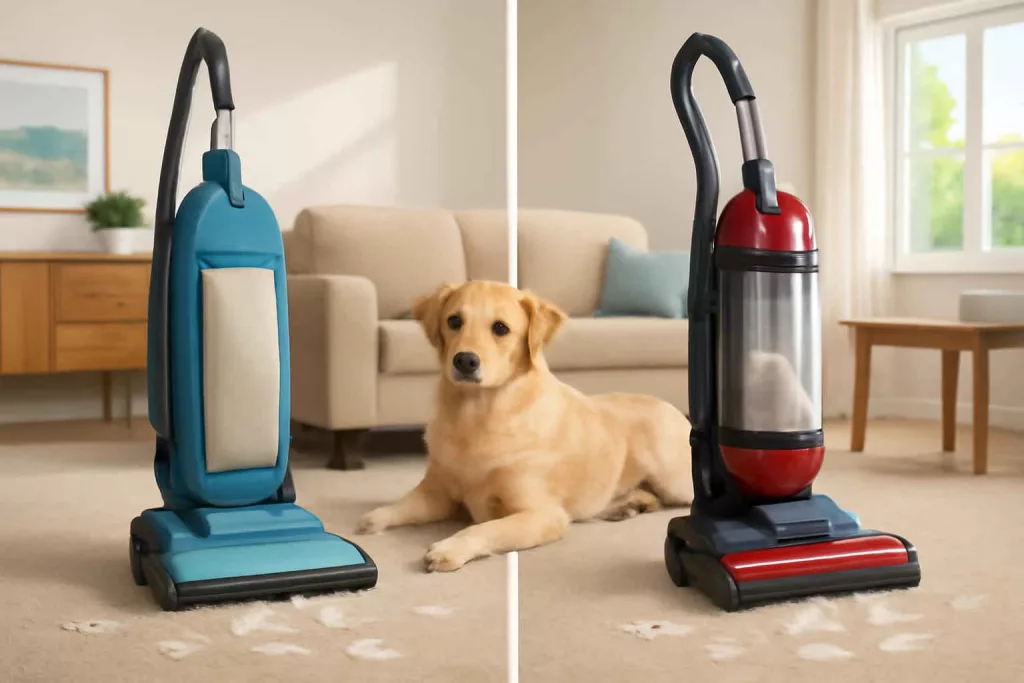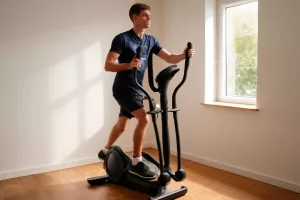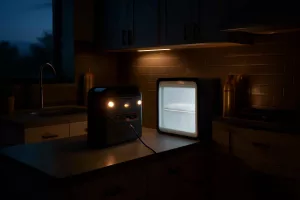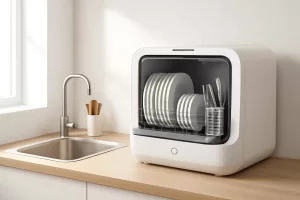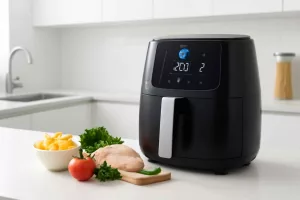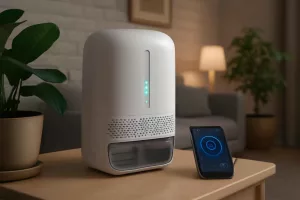Choosing the right upright vacuum can transform your cleaning routine, especially if you have pets shedding hair and suffer from allergies. This guide dives deep into the world of bagged vs bagless upright vacuums, covering how each type works, the benefits and drawbacks, key features to prioritize, and our top picks for both bagged and bagless designs. Whether you’re a busy pet owner or someone seeking allergy relief, you’ll gain actionable insights for selecting the ideal cleaner.
Understanding Bagged and Bagless Upright Vacuums
How Bagged Upright Vacuums Work
Bagged upright vacuums rely on replaceable dust bags to contain debris. When you vacuum, dirt and pet hair are sucked through the brush roll and into a sealed compartment that holds a disposable bag. As the bag fills, the airflow decreases slightly, signaling when it’s time for a replacement. These models are renowned for their strong filtration, as the sealed system prevents dust and allergens from escaping back into the air. This makes them a solid choice for allergy-sensitive households.
Most bagged models feature multi-layer filtration within the bag, trapping microscopic particles and preventing them from contaminating filters or leaking back into your home. While you’ll incur ongoing costs replacing bags, the convenience of easy disposal and less frequent filter cleaning can outweigh this expense. For pet owners, the high-capacity bags mean fewer interruptions during large cleaning sessions.
How Bagless Upright Vacuums Work
Bagless upright vacuums have become increasingly popular thanks to their transparent dust canisters that allow you to see exactly when they need emptying. Dirt and pet hair travel from the brush roll into a cyclonic chamber that spins debris out of the airflow, depositing it in the clear bin. Without bags, there’s no replacement cost, and emptying is as simple as releasing the latch over a trash bin.
Advancements in cyclonic technology have improved the ability of bagless units to capture fine particles. However, emptying the canister can stir up dust, potentially triggering allergies if not done carefully. Some manufacturers include hygienic release mechanisms that minimize airborne dust during disposal. Overall, bagless vacuums offer cost savings and convenience but may require more frequent filter maintenance.
Pros and Cons for Pet Hair and Allergy Control
Bagged Upright Vacuums Pros
Bagged uprights tend to excel at trapping allergens because the sealed bag prevents dust and pollen from escaping. For allergy sufferers, this containment is critical. Many models include HEPA filters to capture 99.97% of particles as small as 0.3 microns, removing pet dander and dust mites effectively. The large-capacity bags also handle heavy debris like pet hair without losing suction quickly. Plus, emptying is mess-free: you simply remove and dispose of the bag without coming into contact with the debris.
Bagged Upright Vacuums Cons
The primary drawback of bagged vacuums is the ongoing cost of replacement bags. Depending on usage, you may need to change the bag monthly or more frequently in multi-pet homes, adding to maintenance expenses. Availability of bags can vary by brand, requiring you to stock up. Additionally, as the bag fills, suction can diminish, so monitoring bag fullness is essential to maintain peak performance.
Bagless Upright Vacuums Pros
Bagless uprights eliminate the recurring cost of purchasing bags. Their clear canisters let you see when they’re full, ensuring you never miss the optimal emptying point. Modern cyclonic technology and multi-stage filtration in many bagless models can rival sealed bag systems. For cost-conscious users, this design is appealing. The transparent bin also provides a satisfying visual of dirt removal, which many users appreciate.
Bagless Upright Vacuums Cons
Emptying the bin can generate dust clouds if not handled correctly, which is a concern for allergy sufferers. Frequent filter cleaning or replacement may be necessary to maintain suction and filtration quality. Over time, filters can clog, reducing performance and requiring additional maintenance steps. Users must clean or replace filters according to manufacturer guidelines to avoid long-term efficiency loss.
Key Features to Look for in an Upright Vacuum for Pet Hair
Suction Power and Motor Strength
A high-quality motor with powerful suction is crucial for lifting embedded pet hair from carpets and upholstery. Look for models with adjustable suction settings to transition from carpets to hardwood floors. Strong airflow measured in air watts or cubic feet per minute indicates the vacuum’s capacity to pull debris into the bin or bag. Pet hair can clog brush rolls, so choose a vacuum known for consistent suction even as the canister or bag fills.
Brush Roll Technology
Specialized brush rolls designed to pick up pet hair can make a significant difference. Look for tangle-free or self-cleaning brush rolls that prevent hair from winding around the brush bar. Some vacuums include motorized pet tools or rubberized brushes that capture hair more effectively. Interchangeable attachments such as a pet hair turbo tool or crevice tool can enhance reach in furniture crevices and stairs.
Filtration Systems
A robust filtration system, ideally HEPA-certified, ensures that allergens remain trapped within the vacuum. For homes with allergy sufferers, sealed systems that direct airflow through multiple filter stages are ideal. Multi-layer foam, mesh pre-filters, and activated charcoal layers can further reduce odors associated with pet hair. Confirm that the filters are washable or easy to replace for cost-effective maintenance.
Capacity and Maintenance
Large dust bags or canisters reduce the frequency of emptying, which is particularly beneficial in pet households. Models with quick-release bins or slide-out dust bags simplify maintenance. Consider how easy it is to access filters for cleaning and the availability of replacement parts. A design that minimizes disassembly time and tool changes will streamline regular vacuum upkeep.
Top Picks for Bagged and Bagless Upright Vacuums
Best Bagged Upright Vacuum for Pet Hair
The Oreck XL Pro Upright Vacuum emerges as a top choice for pet hair in a bagged design. Its sealed bag system and HEPA filter ensure allergens stay locked away, while a powerful 10-amp motor delivers consistent suction. The large-capacity bags hold plenty of debris, cutting down on maintenance interruptions. Its adjustable height settings transition smoothly across carpet and hard floors, and the included pet hair turbo brush targets upholstery. You can find similar models and read more about sealed filtration systems in our bagged vs bagless cordless stick vacuum guide.
Shop Bagged Upright Vacuums on Amazon
Best Bagless Upright Vacuum for Pet Hair
The Dyson Ball Animal 2 bagless upright vacuum provides unmatched performance for pet hair with its powerful cyclone technology and self-adjusting cleaner head. The clear bin is easy to empty without touching debris, and a lifetime washable filter reduces replacement costs. Its premium brush roll and specialized pet tool lift embedded hair from deep carpets and furniture. For comparison, see how cyclonic bin systems stack up in our best cordless robot vacuum mops for pet hair article.
Shop Bagless Upright Vacuums on Amazon
Maintaining Your Upright Vacuum for Longevity
Cleaning and Replacing Filters
Regular filter maintenance is vital. Bagged models may include secondary filters that require washing or replacement. Bagless vacuums often have pre-motor and post-motor filters; follow manufacturer guidelines for cleaning intervals and methods. Use gentle soap and water on washable filters, ensuring complete drying before reinstallation. Keep spare filters on hand to maintain peak performance between replacements.
Emptying and Replacing Bags
For bagged uprights, change the bag when the indicator shows fullness or suction drops noticeably. Always dispose of used bags in a sealed trash bag to prevent allergen release. When installing a new bag, ensure a tight seal around the inlet to maintain suction efficiency. Investing in brand-specific replacement bags will avoid compatibility issues.
Upholstery and Attachments Care
Detach and clean motorized pet tools, crevice tools, and extension wands regularly to remove trapped hair. Rinse attachments in warm water if allowed by the manufacturer. Inspect brush rolls for tangles; use scissors or a blade tool to carefully remove wrapped hair. Lubricate swivel joints on hose connections if they become stiff over time.
Frequently Asked Questions
Is a bagged vacuum better for allergies?
Yes. Bagged vacuums with sealed systems and HEPA filters tend to trap allergens more effectively. Since you dispose of the sealed bag without exposing dust and dander, you minimize airborne irritants—a major benefit for allergy sufferers.
Are bagless vacuums more cost-effective?
Bagless vacuums eliminate the recurring cost of replacement bags, making them more economical upfront. However, you may need to replace filters periodically. Carefully weigh filter replacement frequency and cost against bag expenses to determine long-term savings.
Conclusion
When selecting between bagged vs bagless upright vacuum models for pet hair and allergies, consider your priorities. If you value hassle-free allergen containment and minimal filter maintenance, a bagged upright vacuum is likely your best fit. Opt for a bagless design if you prefer to avoid ongoing bag purchases and appreciate the clear debris canister. Focus on powerful suction, specialized brush rolls, and HEPA filtration for optimal results. Armed with this guide and our top picks, you can confidently choose the right upright vacuum to keep your home fresh, pet-hair free, and allergy-friendly.
